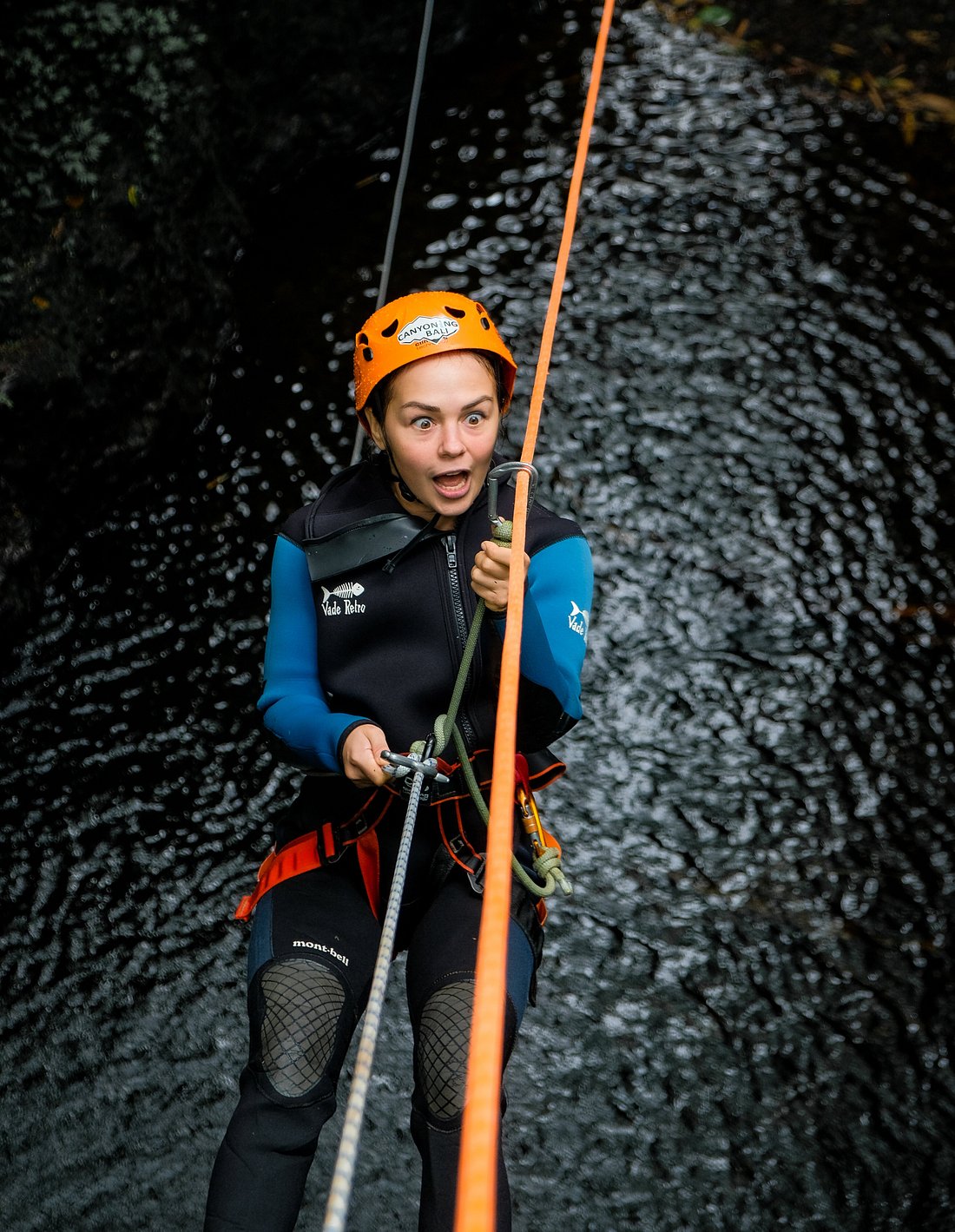Are you searching for an adrenaline-pumping adventure that tests both your physical and mental skills? Look no further than canyoning.
This extreme sport combines various techniques to offer a stunning challenge and the opportunity to explore nature’s hidden beauty.
In this article, we’ll dive deep into the canyoning techniques you need to master for an even more exciting and satisfying experience.
What is Canyoning?
Canyoning, also known as canyoneering, is an adventurous activity that involves descending through canyons, gorges, or narrow crevices using a variety of techniques.
This thrilling sport typically includes a combination of walking, climbing, jumping, crawling, and using specialized equipment to explore and descend canyons with often spectacular geological formations.
Canyoning offers the chance to overcome various natural challenges and experience an adrenaline rush while enjoying breathtaking natural beauty.
It’s a unique way to immerse yourself in the environment, testing your limits and discovering hidden waterfalls, rock pools, and stunning rock formations that are often inaccessible by other means.
List of Essential Canyoning Equipment
Before we delve into the techniques, it’s crucial to understand the equipment needed for a safe and comfortable canyoning adventure. Here’s a list of common canyoning gear:
1. Neoprene Suit
This wetsuit-like garment protects your body from cold and injury. It also provides additional protection from friction when interacting with rocks or water.
The thickness of the suit depends on the water temperature and the duration of your canyoning trip.
2. Outdoor Shoes
Water-resistant shoes with good grip are essential for ensuring safety when walking on wet and slippery surfaces.
These shoes also protect your feet from potential injuries caused by sharp rocks or hidden underwater obstacles.
3. Lighting
A headlamp or flashlight is necessary for navigation in dark or poorly lit areas.
It’s also crucial in emergency situations and when traversing tunnels or narrow gaps where natural light doesn’t reach.
4. Drinking Water
Always carry enough water to stay hydrated during the activity. Proper hydration is key to maintaining energy levels and focus throughout your canyoning adventure.
5. Astro Foil
This emergency blanket helps protect your body from cold when interacting with cold water or in wet environments.
It’s lightweight and compact, making it easy to carry in your canyoning bag.
6. Rope
Ropes are used for various canyoning techniques such as rappelling and climbing.
They must be strong and durable to ensure safety when descending or climbing canyon walls.
7. Descender and Harness
A descender is a device used to safely lower yourself on a rope, while a harness is worn around your body to connect you to the rope and other equipment.
8. Safety Equipment
Safety gear such as helmets and elbow or knee pads are essential in canyoning.
Helmets protect your head from impacts, while other pads protect body parts from friction and collisions with rocks.
9. Waterproof Bag
A waterproof bag is used to store equipment and personal items during canyoning. It helps keep your belongings dry and safe throughout the journey.
Mastering Canyoning Techniques for a More Exciting Experience
Now that we’ve covered the essential equipment, let’s explore the four key canyoning techniques that will take your adventure to the next level:
1. Cliff Jumping
One of the most exhilarating techniques in canyoning is cliff jumping. This activity involves leaping from a certain height into a pool or water area below.
While it might sound simple, cliff jumping requires careful assessment and execution to ensure safety.
Before attempting a jump, it’s crucial to thoroughly check the water depth and surrounding area.
Look for any hidden obstacles beneath the water surface, such as submerged rocks or logs. The water should be deep enough to allow for a safe landing, typically at least 3-4 meters deep for jumps of moderate height.
When preparing to jump, stand at the edge of the cliff with your toes slightly over the edge. Keep your body straight and your arms close to your sides.
As you jump, push off with both feet and aim to enter the water feet-first with your body straight and toes pointed.
This position helps you penetrate the water smoothly and reduces the risk of injury.
Cliff jumping provides an incredible rush of adrenaline and a sense of freedom as you soar through the air before plunging into the refreshing water below.
It’s an unforgettable experience that combines the thrill of free-falling with the beauty of natural surroundings.
2. Climbing
Climbing is a fundamental canyoning technique that involves using your hands and feet to ascend canyon walls or rock formations.
This technique requires physical strength, skill, and proper technique to ensure safety.
When climbing in a canyon, look for natural handholds and footholds in the rock face. These can be small ledges, cracks, or protrusions that offer a secure grip.
Always test each hold before putting your full weight on it, as some rocks may be loose or unstable.
Maintain three points of contact with the rock at all times – this means having either two hands and one foot or two feet and one hand in contact with the rock surface.
This approach provides stability and reduces the risk of falling.
As you climb, keep your body close to the rock face to maintain balance and conserve energy.
Use your legs to push yourself up rather than relying solely on your arms, as your leg muscles are generally stronger and less prone to fatigue.
Climbing allows you to explore higher parts of the canyon and enjoy breathtaking views from elevated positions.
It’s a challenging yet rewarding aspect of canyoning that combines physical exertion with problem-solving skills as you navigate the natural terrain.
3. Rappelling or Abseiling
Rappelling, also known as abseiling, is a technique used to descend canyon walls using a rope and descender device.
This method allows for controlled and safe descent, even on steep or vertical surfaces.
To begin rappelling, secure your rope to a solid anchor point at the top of the descent.
This could be a sturdy tree, a large boulder, or a specially installed bolted anchor.
Always double-check your anchor and rope setup before beginning your descent.
Attach your descender device to the rope and connect it to your harness. The most common
descender used in canyoning is the figure-8 device, which provides excellent control and friction.
As you start your descent, lean back in your harness so that your body forms roughly a 90-degree angle with the rock face.
Your feet should be shoulder-width apart and flat against the wall. Use one hand to hold the rope below the descender (this is your brake hand) and the other hand to balance yourself against the rock face if needed.
Control your speed by adjusting the pressure of your brake hand on the rope. To slow down or stop, simply apply more pressure.
To descend faster, loosen your grip slightly. Rappelling offers a unique perspective of the canyon as you smoothly glide down rock faces, often alongside waterfalls or through narrow crevices.
4. Sliding
Sliding is a fun and unique canyoning technique where you glide along smooth, slippery surfaces or wet rocks, often assisted by water flow.
This technique provides a playful and exciting way to navigate certain parts of a canyon.
Before attempting a slide, carefully inspect the route for any potential hazards such as sharp rocks or sudden drops.
The ideal sliding surface should be smooth and have a consistent slope.
To slide safely, sit down at the top of the slide with your legs extended in front of you.
Cross your arms over your chest to protect them from hitting rocks, and keep your head slightly forward to maintain balance.
Push off gently and let gravity do the work. Keep your body relaxed but maintain control of your position.
If you need to slow down, you can use your feet or hands to create friction against the rock surface, but be careful not to catch on any protrusions.
Sliding offers a unique sensation of speed and connection with the natural environment.
It’s often one of the most enjoyable aspects of canyoning, providing moments of pure fun amidst the more challenging techniques.
Conclusion
Canyoning is an exhilarating sport that offers a diverse range of techniques to enhance your adventure experience.
By mastering techniques such as cliff jumping, climbing, rappelling, and sliding, you can enjoy every aspect of canyoning to its fullest potential.
Remember that proper equipment and safety precautions are key to a safe and enjoyable experience.
Always canyon with experienced guides or thoroughly trained companions, and never hesitate to ask for help or clarification if you’re unsure about any aspect of the activity.





i want to play canyoning again if i came back to Bali. nice guys, you’re very nice people
so helpful, when i try canyoning in bali. i use this technique too
what a nice technique bruh, ii wish i can go back to Bali again. i really enjoy it
can’t wait for the next update, keep it
i like the technique u share with us